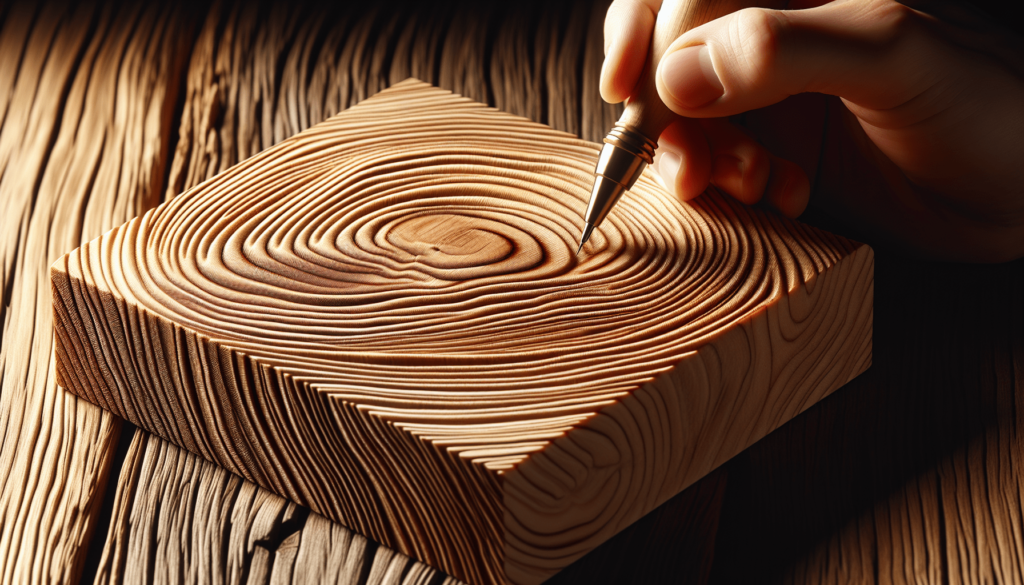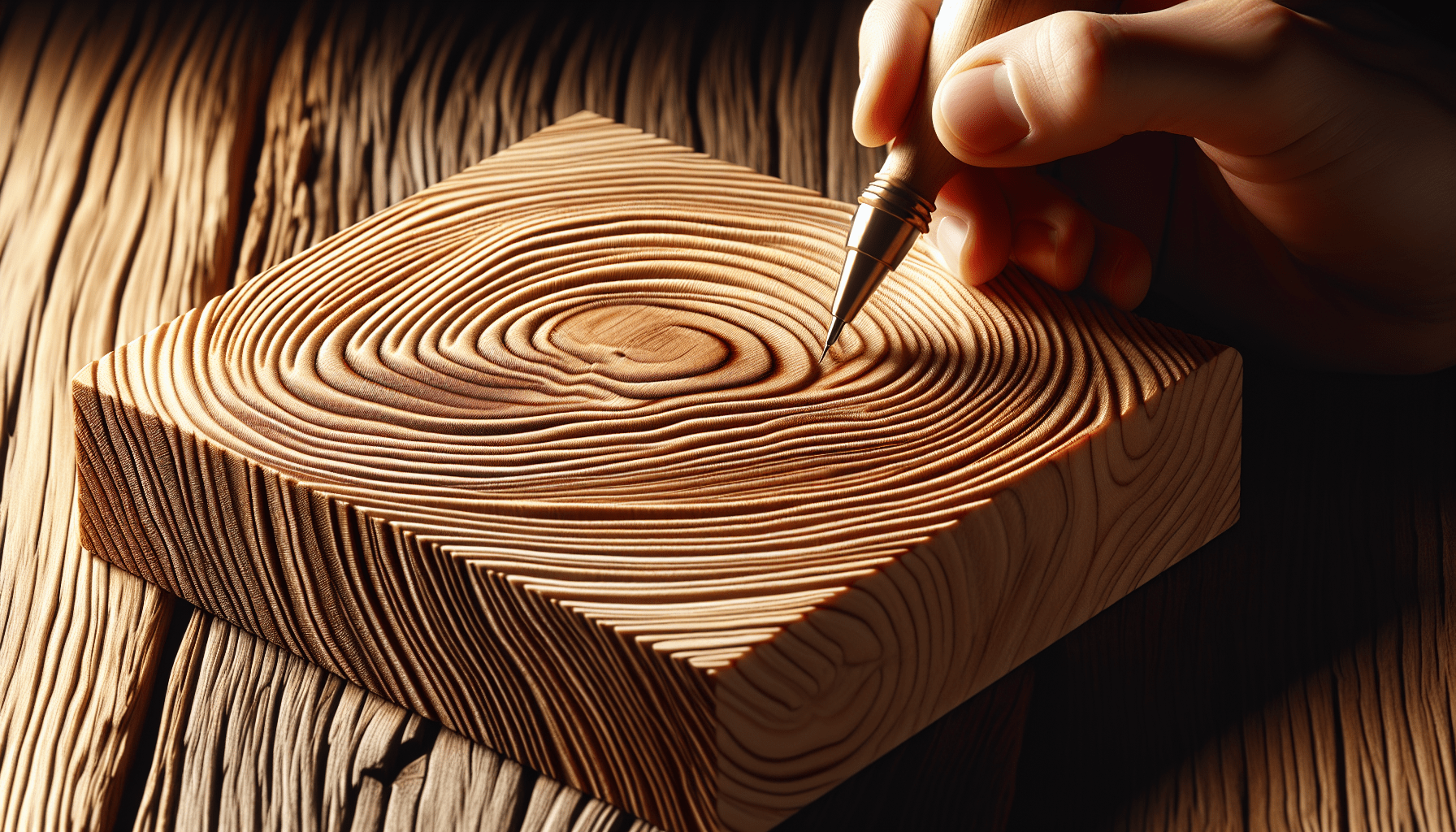What type of wood is best for pyrography? It’s one of those questions that might pop into your head when you’re staring at a plain piece of wood, pondering what to do with it. Fire, after all, has always had a somewhat primal allure. And then there’s the fact that pyrography, or wood-burning, is strangely satisfying. It’s a blend of rustic artistry and focused meditation, where you transfer images from your mind onto the grain of a board.
So, what exactly makes one type of wood better than another for pyrography? You’re about to get the rundown—from the variables that matter to the best grains to choose for your masterpieces. And don’t worry, I won’t leave you hanging with some obscure wood that only grows in the remotest corners of the Amazon. Practical advice is the name of this game. Let’s get into the nitty-gritty.
What Is Pyrography?
Definition and Basics
Let’s start at the very beginning, since it’s a very good place to start (cue the music). Pyrography, in its most basic definition, is the art of burning designs onto wood. Think of it as tattooing for lumber, with tools that range from simple wood burners to more sophisticated, temperature-controlled pyrography pens. The result? Art that smells faintly of a campfire and has that rustic charm that makes everything look like it was born in a cabin somewhere in the Appalachian Mountains.
The Tools of the Trade
You can’t talk wood without talking tools. Your basic pyrography toolkit might include:
- A pyrography pen: This is like the magic wand of wood-burning. It comes with interchangeable tips for shading, detailing, and writing.
- Safety gear: I can’t overstate this. When you’re working with hot tools, gloves and a mask are not optional.
- Sandpaper: Because preparing your wood’s surface can make all the difference.
- Stencil: If freehand isn’t your thing, stencils can offer a big helping hand.
What Makes Wood Good for Pyrography?
Softness vs. Hardness
So, what should you look for in wood? Well, there’s a pretty simple rule: softer woods are generally easier to work with. Think of it as the difference between drawing on a piece of cloth and a slab of granite. Softwoods tend to burn at lower temperatures and offer a canvas that’s much easier for beginners.
Grain Matters
The grain of the wood can also make or break your project. Tight, uniform grains are the golden ticket because they offer a more consistent burning surface. Knotty wood, while charming in its own way, can lead to uneven lines and unexpected surprises.
Color Contrast
When it comes to pyrography, natural contrast is your friend. Paler woods often provide a better background for your dark burn marks, making your artwork pop more dramatically.

Types of Wood Used in Pyrography
Best Woods for Beginners
If you’re just starting out, you’ll want to focus on woods that are easy to burn, affordable, and widely available.
Basswood
- Softness: This is like the marshmallow of woods—not too hard, not too soft.
- Grain: Uniform and consistent.
- Color: Pale, allowing for excellent contrast with burn marks.
- Availability: You can find it at most craft stores.
Birch
- Softness: Slightly harder than basswood but still manageable.
- Grain: Tight and fine.
- Color: Light, providing a good backdrop for your designs.
- Availability: Often used in plywood, so it’s fairly easy to come by.
Let’s lay it all out in a convenient table, shall we?
| Wood Type | Softness | Grain | Color | Availability |
|---|---|---|---|---|
| Basswood | Very Soft | Uniform | Pale | High |
| Birch | Soft | Tight & Fine | Light | High |
Intermediate Woods
After you’ve honed your skills, you might feel like stepping up your game. Intermediate woods offer more challenges and, potentially, greater rewards.
Poplar
- Softness: It’s like Goldilocks—just right.
- Grain: Relatively consistent, with minor quirks.
- Color: Light with greenish hues.
- Availability: Fairly common and not too pricey.
Maple
- Softness: Harder than the beginner woods but not overly troublesome.
- Grain: Fine and even, though it can have wavy patterns.
- Color: Light, perfect for contrasty designs.
- Availability: Easily found in craft and woodworking stores.
Now, another table for your viewing pleasure:
| Wood Type | Softness | Grain | Color | Availability |
|---|---|---|---|---|
| Poplar | Medium | Consistent | Light/Green | High |
| Maple | Medium-Hard | Fine & Even | Light | High |
Advanced Options
For the pyrography pros out there, advanced woods offer intricate grains and a canvas that can really make your artwork stand out.
Oak
- Softness: Hard and tough, like the guy who runs marathons for fun.
- Grain: Prominent and beautiful, offering a natural texture.
- Color: Reddish to light brown, which can contrast against darker burns.
- Availability: Widely available, but pricier.
Cherry
- Softness: Hard but not overwhelmingly so.
- Grain: Fine and even, often luxurious.
- Color: Reddish-brown, offering a unique contrast for pyrography.
- Availability: More expensive and perhaps a bit trickier to source.
One more table, because who doesn’t love those?
| Wood Type | Softness | Grain | Color | Availability |
|---|---|---|---|---|
| Oak | Hard | Prominent | Reddish/Brown | High |
| Cherry | Hard | Fine | Reddish-Brown | Moderate |
Preparing Your Wood
Sanding
Before you even light up your pyrography pen, you’ve got to give your wood a spa day. Sanding is crucial for a smooth surface, which makes your burns cleaner and your lines finer. Start with a medium grit (around 100-150) and then graduate to a fine grit (220 or higher) for a silky finish.
Cleaning
Dust and residues are the enemies of clean burns. A tack cloth or a vacuum suited for collecting fine wood particles will save you from dealing with unwanted blemishes in your designs.
Practice Makes Perfect
Maybe you’re the type to dive right into the main event, but a little practice can go a long way. Use scrap pieces of your chosen wood to test your tools, play with temperatures, and get a feel for the grain and burn interaction.

Safety First
Ventilation
Let’s face it—burning wood creates smoke. And unless you want to infuse your living space with Eau de Campfire, you’ll need ventilation. A simple fan can help, but ideally, you’d use a designated area with proper ventilation or even an extractor fan.
Protective Gear
Yes, I mentioned it before, but it’s worth repeating. Safety gloves and a mask are your best friends here. Not only will they protect you from burns, but they’ll also keep you from inhaling any fine particulates or fumes.
Tips and Tricks
Temperature Control
Every wood type responds differently to temperature, and controlling this variable can make your projects infinitely better. A pyrography pen with variable heat settings is a worthy investment.
Experiment with Tips
Different projects may call for different tips—literally. While a fine-tipped pen is great for details, a shader tip can give you beautiful gradients. Get to know your equipment and don’t be afraid to switch it up mid-project.
Patience and Precision
This isn’t a race. Taking your time to go slowly and methodically will yield the best results. Rushing can lead to mistakes that are, unfortunately, a bit permanent in this medium.
Conclusion: The Best Wood for Your Pyrography Project
When I started, the act of choosing the right wood felt like finding Waldo in a sea of stripes. But breaking it down into softness, grain, color, and availability makes it manageable. For beginners, basswood and birch are your best bets. Intermediate artists might want to venture into poplar and maple. And if you’re a seasoned pro, oak and cherry offer challenging but rewarding canvases.
Ultimately, the best wood for pyrography is the one that fits your skill level, project needs, and personal preference. Your wood-burning tool is like a conductor’s baton, and the wood is your orchestra. Together, you’ll create a symphony of scorched beauty. So go ahead and get burning—safely, of course.

